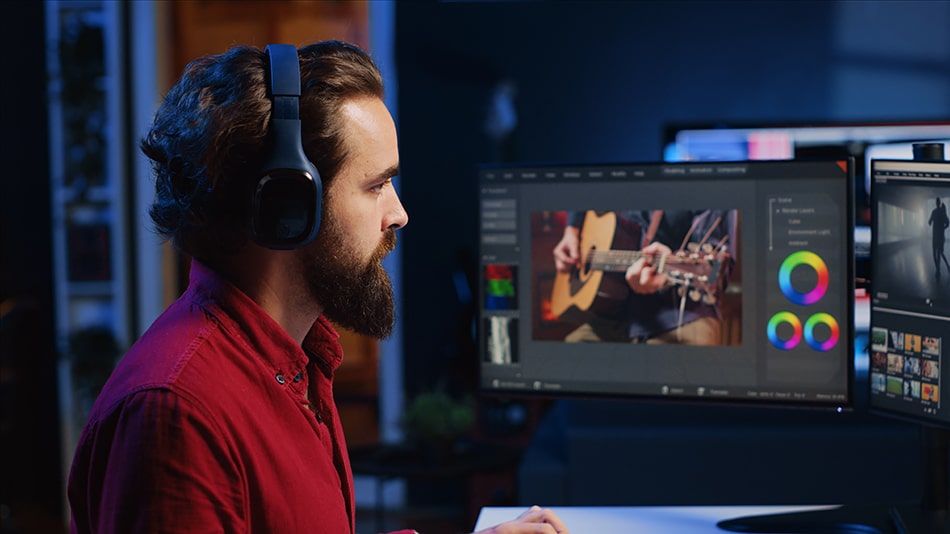The Importance of Creative Direction
The Importance of Creative Direction
Creative direction is the process of shaping the look and feel of a project to make sure it aligns with a brand’s message. Whether you’re designing a logo, building a brand identity, or planning a marketing campaign, creative direction ensures everything looks consistent and fits the brand’s goals.
It’s one of the primary focuses for everything that we create at Ad House Advertising. Understanding our client’s brand and the goals for each element in their marketing campaigns are key as we begin on a new creative project.
A creative director oversees the whole creative process. They work closely with graphic or website designers, art directors, and other team members to bring ideas to life. Their job includes making important decisions about the style, tone, and overall direction of the project, ensuring it aligns with the brand’s identity and goals.
Creative direction is the process of shaping the look and feel of a project to make sure it aligns with a brand’s message. Whether you’re designing a logo, building a brand identity, or planning a marketing campaign, creative direction ensures everything looks consistent and fits the brand’s goals.
It’s one of the primary focuses for everything that we create at Ad House Advertising. Understanding our client’s brand and the goals for each element in their marketing campaigns are key as we begin on a new creative project.
A creative director oversees the whole creative process. They work closely with graphic or website designers, art directors, and other team members to bring ideas to life. Their job includes making important decisions about the style, tone, and overall direction of the project, ensuring it aligns with the brand’s identity and goals.
Creative Direction Responsibilities
Seizing Creative Direction

The Importance of Creative Direction in Graphic Design
Creative direction is crucial in graphic design, whether it’s for a digital or printed product or for a website design. This is because it ensures consistency across all visual elements. From logo design to marketing materials, creative direction helps maintain a unified brand image. This consistency is vital for building brand recognition and trust with the target audience.
Creative Direction and Understanding the Target Audience
Knowing your target audience is key to making sure creative projects are successful. A creative director needs to understand what the audience likes and how to appeal to them. This means doing research on things like age, interests, and current trends that matter to that group. Creative directors also look at what’s happening in the market and what people are buying or paying attention to. By combining all this information, the creative direction helps create content that connects with the audience on an emotional level. This makes the content more engaging and effective in getting a message across.
Aligning Creative Direction with Audience Needs
- Market Research: Analyzing trends to understand what appeals to the target audience.
- Audience-Centric Design: Creating visuals that reflect the tastes and preferences of the audience.
- Feedback Integration: Adjusting designs based on audience feedback to improve engagement and satisfaction.
Seizing Creative Direction

Understanding Campaign Terminology
The Importance of Creative Direction in Graphic Design
Creative direction is crucial in graphic design, whether it’s for a digital or printed product or for a website design. This is because it ensures consistency across all visual elements. From logo design to marketing materials, creative direction helps maintain a unified brand image. This consistency is vital for building brand recognition and trust with the target audience.
Creative Direction and Understanding the Target Audience
Knowing your target audience is key to making sure creative projects are successful. A creative director needs to understand what the audience likes and how to appeal to them. This means doing research on things like age, interests, and current trends that matter to that group. Creative directors also look at what’s happening in the market and what people are buying or paying attention to. By combining all this information, the creative direction helps create content that connects with the audience on an emotional level. This makes the content more engaging and effective in getting a message across.
Aligning Creative Direction with Audience Needs
- Market Research: Analyzing trends to understand what appeals to the target audience.
- Audience-Centric Design: Creating visuals that reflect the tastes and preferences of the audience.
- Feedback Integration: Adjusting designs based on audience feedback to improve engagement and satisfaction.
Creative Direction in Action

Creative Director
Creative Direction Responsibilities
Creative Direction in Logo Design
At Ad House Advertising, we believe logo design is one of the most important parts of a brand’s identity. A logo isn’t just a graphic—it’s a first impression, a message, and a promise. That’s why we take a strategic approach to every logo we create, making sure it reflects our client’s values and speaks clearly to their target audience.
- Simplicity: We create clean, memorable logos that scale easily across all platforms—digital, print, signage, and more. Simple designs are often more memorable and versatile.
- Relevance: We ensure each design aligns with the brand’s industry, tone, and long-term goals.
- Timelessness: We avoid fleeting trends and focus on designs that will stand the test of time.
- Ease of Use: We always test our logos across real-world applications—social media icons, letterhead, merch, you name it—to ensure they’re not only beautiful but functional.
Benefits of Hiring Ad House Advertising as a Creative Direction
Cohesive Branding
Creative direction ensures all design elements work harmoniously to create a unified brand identity. This consistency strengthens brand recognition and trust across different platforms and materials.
Audience Engagement
Well-directed designs resonate with the target audience, leading to higher engagement and interaction. This connection can foster increased brand loyalty and customer retention.
Efficient Workflow
A well-defined creative direction streamlines the entire design process, minimizing unnecessary revisions. This efficiency saves both time and resources while maintaining the quality of the final product.
Emotional Impact
Creative direction steers designs to evoke strong emotions, creating meaningful connections with audiences. This emotional resonance makes the brand more memorable and helps establish loyalty.
Problem-Solving
It addresses design challenges by developing innovative solutions that balance form and function. This approach ensures the design is both visually appealing and practical for its intended use.
Adaptability
Creative direction ensures that designs can evolve while staying true to the brand’s core identity. This adaptability allows brands to remain relevant across changing trends and media formats.
Frequently Asked Questions About Creative Direction

Shape Your Brand Audience With Targeted Ads

